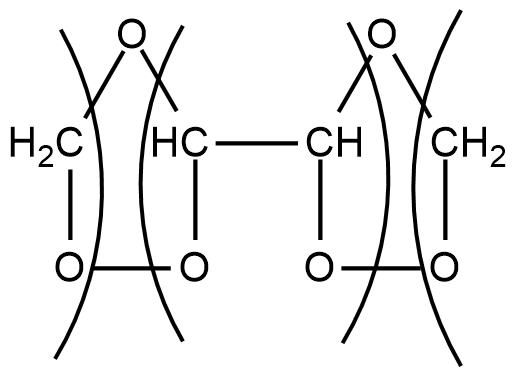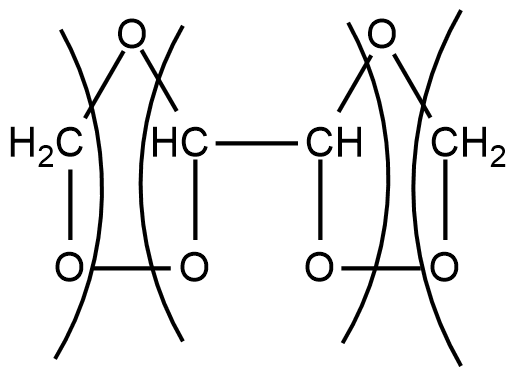
A diene, buta-1,3-diene was subjected to ozonolysis to prepare aldehydes. Which of the following aldehydes will be obtained during the reaction?
A.
B.
C.
D.
Answer
486.9k+ views
Hint: The two step conversion of an alkene or alkyne into an ozonide followed by its reductive cleavage to yield carbonyl compounds is called ozonolysis. It occurs at a low temperature range of
Complete step by step answer:
Reaction description:
Step1: When ozone is passed through a solution of buta-1,3-diene in some inert solvent such as

These ozonides are unstable compounds and also explosive in nature. So they are not isolated.
Step2: In second step, these ozonides are reduced, in situ, with zinc dust and water to give one molecule of

Hence the correct answer is option (A).
Ozonolysis has been exclusively used in the past for the structure elucidation of alkenes. It is the versatile method for locating the position of multiple bonds in an unknown alkene since no two alkenes give the same combination of aldehyde or ketones.
Note:
Ozonides are also reduced by
Complete step by step answer:
Reaction description:
Step1: When ozone is passed through a solution of buta-1,3-diene in some inert solvent such as

These ozonides are unstable compounds and also explosive in nature. So they are not isolated.
Step2: In second step, these ozonides are reduced, in situ, with zinc dust and water to give one molecule of

Hence the correct answer is option (A).
Ozonolysis has been exclusively used in the past for the structure elucidation of alkenes. It is the versatile method for locating the position of multiple bonds in an unknown alkene since no two alkenes give the same combination of aldehyde or ketones.
Note:
Ozonides are also reduced by
Recently Updated Pages
Master Class 9 General Knowledge: Engaging Questions & Answers for Success

Master Class 9 English: Engaging Questions & Answers for Success

Master Class 9 Science: Engaging Questions & Answers for Success

Master Class 9 Social Science: Engaging Questions & Answers for Success

Master Class 9 Maths: Engaging Questions & Answers for Success

Class 9 Question and Answer - Your Ultimate Solutions Guide

Trending doubts
Give 10 examples of unisexual and bisexual flowers

Draw a labelled sketch of the human eye class 12 physics CBSE

Differentiate between homogeneous and heterogeneous class 12 chemistry CBSE

Differentiate between insitu conservation and exsitu class 12 biology CBSE

What are the major means of transport Explain each class 12 social science CBSE

a Tabulate the differences in the characteristics of class 12 chemistry CBSE




